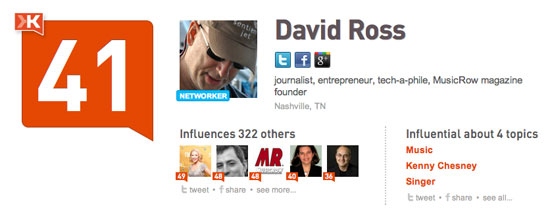 Sales Trilogy: Part One showcased the final week of 2011 and some of the basic indicators for country music’s sales performance. (Read it HERE.) Sales Trilogy: Part Two will put the year’s achievements in perspective across genres, by artist, by sales format and by market share.
Sales Trilogy: Part One showcased the final week of 2011 and some of the basic indicators for country music’s sales performance. (Read it HERE.) Sales Trilogy: Part Two will put the year’s achievements in perspective across genres, by artist, by sales format and by market share.
Regular readers know that the source of this year-end data, is Nielsen SoundScan. Special thanks to Scoop Marketing’s Anna Loynes who is instrumental in compiling and distributing the coveted information.
For those living in a units-based world, it was a good year. Total album sales rose 1.3% to 326.2 million units and if we include TEA (track equivalent albums) in that tally the increase was a healthy 3.2%.
Genres posting the highest gains by percentage were Jazz (+26%; 11.07 million), New Age (+16.2%; 1.93 million), Electronic (+15%; 10.05 million) and Classical (+6.8%; 9.57 million). Coincidence or not, these high-growth genres all qualify for “Long Tail” niche status. Are we seeing a shift in buying habits or is this a reflection of increased availability of catalog due to digital formats? Either way it is something for marketers of these diverse genres to watch.
Formats suffering the slings and arrows of negative growth were Soundtracks (-19.4%; 13.23 million), Latin (-4.3%; 11.81 million), R&B (-4.2%; 55.44 million), Christian/Gospel (-2%; 23.73 million) and Country (-1.8%; 42.92 million).
As expected, Digital track sales (+8.5%) and Digital Album Sales (+19.5%) continued to erode physical format dominance. Digital albums as a percent of Total album sales are now 31.2% compared with 26.4% for 2010. (country digital albums as a percentage of total country album sales are 19%.) This means that over 68% of album sales are still in physical format.
Some “Did you know?” party chatter—In 2010 and 2011 there were 13 albums that sold one million or more units and 35 albums made it into the 500k-999k category both years.
Catalog was an important element in carving out the positive 2011 sales landscape. Looking at overall album sales, deep catalog jumped 12.5%, regular catalog increased 8.9% while current sales fell -4.2%. That trend was most pronounced in the digital arena. Deep digital catalog skyrocketed 23.1%, with overall catalog rising 19.8%.
Market Share
The album market share discussion is colored this year by the knowledge that UMG (29.85%) and EMI (9.62%) are planning to integrate in the coming year. This would give the new combined entity almost 40% of the total sales pie leaving Sony Music (29.29%) and Warner Music Group (19.13%) as distant challengers.

Billboard Top Ten Artist Airplay Based Upon Nielsen BDS (2011 calendar year)
Artist Stats
And now to the artist discussion. Whatever question is asked, guess Adele and her album 21, and odds are almost 100% you will be correct. Adele sold 6.744 million units and in the process earned the No. 1 position for Top Selling Album and Artist. Her track “Rolling In The Deep” was top Selling Digital Track (5.813 million). Nashville, unfortunately was mostly MIA with regard to the various top ten sales lists. However, on the Top Selling Album List Jason Aldean was No. 5 (1.576 million) and Lady Antebellum placed No. 10 (1.2 million). In the Top Artist sweeps Lady A, Jason and Taylor Swift placed in positions 6, 8 and 9 respectively. (see above chart)
Factoids
>>For the second straight year, Lady Antebellum finishes the year as the biggest selling group of 2011 with more than 2.1 million album sales.
>>Garth Brooks continues to be comfortably the best selling artist in the Nielsen SoundScan era with more than 68.5 million album sales; 5 million sales ahead of the Beatles.
>>Katy Perry ends the year as the most played artist over the airways in 2011 with more than 1.4 million spins; edging out Bruno Mars by 17,000 spins.
>>In 2011, 31% of all albums purchased were through a digital service like iTunes, Amazonmp3 or eMusic, an increase of 5 points from 2010.

 Cricket Communications has announced that its Muve Music service has surpassed 500,000 customers since its January 2011 launch. That figure puts it behind market leader Rhapsody, but reportedly ahead of Spotify (who hasn’t released U.S. subscriber info) for the No. 2 digital subscription service in the U.S.
Cricket Communications has announced that its Muve Music service has surpassed 500,000 customers since its January 2011 launch. That figure puts it behind market leader Rhapsody, but reportedly ahead of Spotify (who hasn’t released U.S. subscriber info) for the No. 2 digital subscription service in the U.S.











